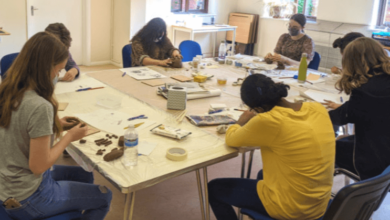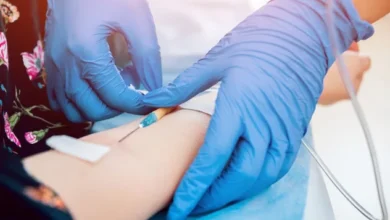Top Physical Therapy Exercises for Recovery

Physical therapy plays a crucial role in the recovery process for those dealing with injuries, surgeries, or chronic conditions. Through a series of targeted exercises, physical therapists can help patients restore mobility, build strength, and ultimately return to their daily activities with reduced pain and improved function. Whether you’re recovering from surgery, an injury, or a long-term health condition, understanding the right exercises to perform can make a significant difference in your recovery journey.
The Importance of Physical Therapy in Recovery
Physical therapy is more than just a set of exercises; it’s a comprehensive approach to healing that addresses the unique needs of each patient. A well-designed physical therapy program can:
- Enhance Mobility: By focusing on flexibility and movement, physical therapy exercises help restore range of motion in stiff or injured joints.
- Improve Strength: Strengthening exercises target weakened muscles, ensuring that they can support the body’s movements effectively.
- Reduce Pain: Through specific techniques, physical therapy can help reduce pain by improving circulation, decreasing inflammation, and enhancing muscle strength.
- Prevent Re-injury: By strengthening the body and improving coordination, physical therapy helps prevent future injuries.
Essential Warm-Up Exercises Before Physical Therapy
Before diving into more intense physical therapy exercises, it’s essential to prepare your body with proper warm-up exercises. Warming up helps increase blood flow to the muscles, reduce the risk of injury, and improve overall performance during your therapy session.
1. Gentle Stretching: Stretching is vital for preparing the muscles and joints for exercise. Focus on dynamic stretches that mimic the movements you’ll be performing during therapy. These might include arm circles, leg swings, or a gentle neck stretch.
2. Light Cardio: Engage in light cardiovascular activities such as walking, cycling, or using an elliptical machine for 5-10 minutes. This helps elevate your heart rate gradually and warms up your muscles.
3. Joint Mobilization: Specific exercises like ankle circles, hip rotations, and shoulder shrugs help mobilize joints, making them more flexible and ready for movement.
Strengthening Exercises for Recovery
Strengthening exercises are a cornerstone of physical therapy, particularly for patients recovering from surgery or injuries. These exercises are designed to rebuild muscle strength, which is essential for supporting the body and improving function.
1. Quad Sets:
- Target Area: Quadriceps
- Purpose: Helps strengthen the quadriceps without straining the knee joint, ideal for knee surgery recovery.
- How to Do It: Sit or lie down with your legs straight. Tighten the muscles on the top of your thigh as much as possible, pushing the back of your knee flat against the floor. Hold for 5 seconds and release.
2. Glute Bridges:
- Target Area: Glutes, Hamstrings
- Purpose: Strengthens the glutes and hamstrings while promoting stability in the core and lower back.
- How to Do It: Lie on your back with your knees bent and feet flat on the floor. Lift your hips towards the ceiling, squeezing your glutes at the top. Hold for a few seconds before lowering back down.
3. Shoulder External Rotation:
- Target Area: Rotator cuff, Shoulders
- Purpose: Enhances the strength of the rotator cuff muscles, crucial for shoulder stability.
- How to Do It: Hold a resistance band with both hands, elbows bent at 90 degrees. Keep your elbows close to your sides and rotate your hands outward, stretching the band. Slowly return to the starting position.
4. Ankle Pumps:
- Target Area: Calves, Ankles
- Purpose: Improves circulation in the legs and strengthens the calf muscles, particularly useful after lower limb surgery.
- How to Do It: While sitting or lying down, point your toes towards your head and then away from your body, pumping your ankles up and down.
Flexibility and Stretching Exercises
Flexibility is crucial for recovery, particularly in preventing stiffness and maintaining a full range of motion in joints. Stretching exercises should be performed slowly and gently to avoid overstretching and potential injury.
1. Hamstring Stretch:
- Target Area: Hamstrings
- Purpose: Increases flexibility in the hamstrings and lower back, which is beneficial for individuals recovering from lower back pain.
- How to Do It: Sit on the floor with one leg extended and the other bent. Reach towards your toes, holding the stretch for 15-30 seconds, and switch legs.
2. Calf Stretch:
- Target Area: Calves
- Purpose: Helps prevent tightness in the calves, reducing the risk of Achilles tendon injuries.
- How to Do It: Stand facing a wall with one foot in front of the other. Keeping your back leg straight, press your heel into the ground and lean forward until you feel a stretch in your calf.
3. Chest Stretch:
- Target Area: Chest, Shoulders
- Purpose: Opens up the chest and shoulders, relieving tension and improving posture.
- How to Do It: Stand with your feet shoulder-width apart. Clasp your hands behind your back and slowly lift them, opening your chest. Hold the position for 20-30 seconds.
4. Hip Flexor Stretch:
- Target Area: Hip Flexors
- Purpose: Alleviates tightness in the hip flexors, which can contribute to lower back pain and hip discomfort.
- How to Do It: Kneel on one knee, with the other foot in front, creating a 90-degree angle with both knees. Push your hips forward slightly, feeling the stretch in the front of your hip.
Balance and Stability Exercises
Restoring balance and stability is essential for preventing falls and improving overall function, especially in older adults or those recovering from lower limb injuries.
1. Single-Leg Stance:
- Target Area: Ankles, Core
- Purpose: Improves balance and ankle stability, reducing the risk of falls.
- How to Do It: Stand on one leg, keeping your body upright. Hold the position for as long as possible, then switch legs. For an added challenge, try closing your eyes or standing on a soft surface.
2. Heel-to-Toe Walk:
- Target Area: Ankles, Calves
- Purpose: Enhances balance and coordination, which is crucial for walking and navigating uneven surfaces.
- How to Do It: Walk in a straight line, placing one foot directly in front of the other, so that the heel of your front foot touches the toes of your back foot with each step.
3. Side Leg Raises:
- Target Area: Hip Abductors, Glutes
- Purpose: Strengthens the hip muscles that contribute to lateral stability, preventing falls and improving gait.
- How to Do It: Lie on your side with your legs straight. Slowly lift the top leg as high as possible, keeping it straight. Lower it back down and repeat before switching sides.
4. Bosu Ball Balance:
- Target Area: Core, Lower Body
- Purpose: Enhances core strength and balance by challenging the body’s stability on an unstable surface.
- How to Do It: Stand on a Bosu ball with both feet, keeping your balance for as long as possible. As you improve, try performing squats or other movements on the ball.
Range of Motion Exercises
Restoring the full range of motion in joints is a critical aspect of physical therapy, particularly after surgeries like joint replacements. These exercises help maintain joint flexibility and prevent stiffness.
1. Shoulder Pendulum:
- Target Area: Shoulders
- Purpose: Restores mobility in the shoulder joint, often used after shoulder surgery.
- How to Do It: Lean forward, allowing your affected arm to hang down. Gently swing your arm in small circles, gradually increasing the size of the circles.
2. Wrist Flexion and Extension:
- Target Area: Wrists
- Purpose: Improves wrist flexibility, essential for tasks like typing or lifting.
- How to Do It: Hold your arm out with your palm facing down. Use your other hand to gently push your hand down towards the floor (wrist flexion) and then back towards the ceiling (wrist extension).
3. Knee Extensions:
- Target Area: Knees
- Purpose: Maintains knee mobility, particularly important after knee surgeries.
- How to Do It: Sit in a chair with your foot on the floor. Slowly extend your knee until your leg is straight, then lower it back down.
4. Ankle Circles:
- Target Area: Ankles
- Purpose: Promotes flexibility in the ankle joint, reducing stiffness.
- How to Do It: While sitting or lying down, lift one leg off the ground. Rotate your ankle in large circles, moving in both directions.
Aerobic Exercises for Cardiovascular Health
In addition to strengthening and flexibility exercises, incorporating aerobic exercises into your physical therapy routine is crucial for overall cardiovascular health and endurance.
1. Walking:
- Target Area: Whole Body
- Purpose: A low-impact way to improve cardiovascular health while promoting joint mobility.
- How to Do It: Begin with short walks, gradually increasing distance and speed as your endurance improves.
2. Cycling:
- Target Area: Lower Body, Cardiovascular System
- Purpose: Enhances cardiovascular fitness while being gentle on the joints, particularly beneficial for knee and hip recovery.
- How to Do It: Use a stationary bike or cycle outdoors, starting with short sessions and gradually increasing duration.
3. Swimming:
- Target Area: Whole Body
- Purpose: Provides a full-body workout without putting stress on the joints, ideal for those recovering from injuries.
- How to Do It: Start with gentle swimming or water walking, progressively increasing intensity based on your comfort level.
4. Elliptical Training:
- Target Area: Lower Body, Cardiovascular System
- Purpose: Offers a low-impact cardiovascular workout that also strengthens the legs.
- How to Do It: Begin with short sessions on the elliptical, focusing on maintaining good posture and smooth movements.
Core Strengthening Exercises
A strong core is fundamental to overall body stability and function. Core exercises are essential for those recovering from back injuries, surgery, or other conditions affecting the torso.
1. Planks:
- Target Area: Core, Shoulders
- Purpose: Builds core strength and stability, supporting better posture and reducing back pain.
- How to Do It: Begin in a push-up position, holding your body in a straight line from head to heels. Engage your core and hold the position for as long as possible.
2. Dead Bug:
- Target Area: Core, Lower Back
- Purpose: Strengthens the core while promoting coordination and stability in the lower back.
- How to Do It: Lie on your back with your arms extended towards the ceiling and knees bent. Slowly lower your right arm and left leg towards the floor, then return to the starting position and switch sides.
3. Bird-Dog:
- Target Area: Core, Lower Back, Glutes
- Purpose: Enhances core stability and coordination, especially important for those with back pain.
- How to Do It: Start on your hands and knees. Extend your right arm forward and left leg backward, keeping your back flat. Hold for a few seconds, then switch sides.
4. Russian Twists:
- Target Area: Core, Obliques
- Purpose: Targets the oblique muscles, improving rotational strength and stability.
- How to Do It: Sit on the floor with your knees bent and feet off the ground. Lean back slightly and rotate your torso from side to side, tapping the floor next to your hips.
Post-Exercise Cool-Down and Recovery
After completing your physical therapy exercises, it’s important to cool down properly to aid in recovery and prevent muscle stiffness.
1. Deep Breathing Exercises:
- Target Area: Respiratory System, Core
- Purpose: Helps to relax the body and mind, reducing stress and tension in the muscles.
- How to Do It: Sit or lie down in a comfortable position. Inhale deeply through your nose, allowing your abdomen to rise, then exhale slowly through your mouth.
2. Gentle Stretching:
- Target Area: Whole Body
- Purpose: Helps to relax the muscles, increase flexibility, and prevent stiffness after exercise.
- How to Do It: Perform static stretches, holding each stretch for 15-30 seconds, focusing on the muscles you worked during your session.
3. Hydration and Nutrition:
- Target Area: Whole Body
- Purpose: Replenishes lost fluids and nutrients, supporting muscle recovery and overall health.
- How to Do It: Drink water or a recovery beverage and consume a healthy snack with protein and carbohydrates within 30 minutes of exercising.
4. Ice or Heat Therapy:
- Target Area: Targeted Muscles or Joints
- Purpose: Reduces inflammation (ice) or promotes relaxation (heat), depending on your needs.
- How to Do It: Apply ice packs to sore or swollen areas for 15-20 minutes, or use a heating pad to relax tight muscles.
Tailoring Exercises to Your Specific Condition
Physical therapy exercises should always be tailored to your specific needs, depending on the injury or condition you’re recovering from. A physical therapist can design a customized exercise program that addresses your unique challenges and goals.
1. Post-Surgical Recovery:
- Target Area: Varies Depending on Surgery
- Purpose: Gradually restores function and mobility after surgery, focusing on the specific area operated on.
- How to Do It: Follow your physical therapist’s guidance closely, starting with gentle movements and progressing as your strength and flexibility improve.
2. Sports Injuries:
- Target Area: Depends on the Injury
- Purpose: Restores strength, flexibility, and coordination, helping athletes return to their sport safely.
- How to Do It: Include sport-specific exercises that mimic the movements of your sport, along with general strengthening and flexibility work.
3. Chronic Pain Management:
- Target Area: Depends on the Pain Location
- Purpose: Reduces pain through gentle movement, stretching, and strengthening, without exacerbating symptoms.
- How to Do It: Focus on low-impact exercises that improve overall fitness without increasing pain, such as swimming, walking, or yoga.
4. Neurological Conditions:
- Target Area: Depends on the Condition
- Purpose: Improves mobility, coordination, and strength in individuals with neurological conditions like stroke or Parkinson’s disease.
- How to Do It: Incorporate exercises that focus on balance, coordination, and flexibility, while being mindful of fatigue levels.
FAQs
What are the most common physical therapy exercises for knee recovery?
Common exercises include quad sets, straight leg raises, and heel slides. These exercises target the quadriceps and hamstrings, which are crucial for knee stability and strength.
How often should I perform physical therapy exercises?
It varies based on your condition, but typically, exercises should be done daily or as prescribed by your physical therapist. Consistency is key to making progress in recovery.
Can I do physical therapy exercises on my own?
While some exercises can be done independently, it’s essential to start under the guidance of a physical therapist to ensure proper form and avoid injury.
What should I do if I experience pain during physical therapy exercises?
Stop the exercise immediately and consult your physical therapist. Pain might indicate that you’re performing the exercise incorrectly or that your body isn’t ready for that level of activity yet.
Are there physical therapy exercises for improving posture?
Yes, exercises like planks, bird-dog, and chin tucks can help strengthen the muscles that support good posture, reducing pain and preventing injury.
Can physical therapy exercises prevent the need for surgery?
In some cases, yes. Physical therapy can strengthen muscles, improve mobility, and reduce pain, which might eliminate the need for surgery. However, this depends on the severity of the condition.
Conclusion
Physical therapy exercises are a powerful tool in the recovery process, whether you’re healing from an injury, surgery, or managing a chronic condition. By focusing on targeted exercises that improve strength, flexibility, balance, and range of motion, you can significantly enhance your recovery and return to your daily activities with reduced pain and improved function. Always consult with a licensed physical therapist to ensure that your exercise program is tailored to your specific needs and goals, and remember that consistency and patience are key to successful recovery.







